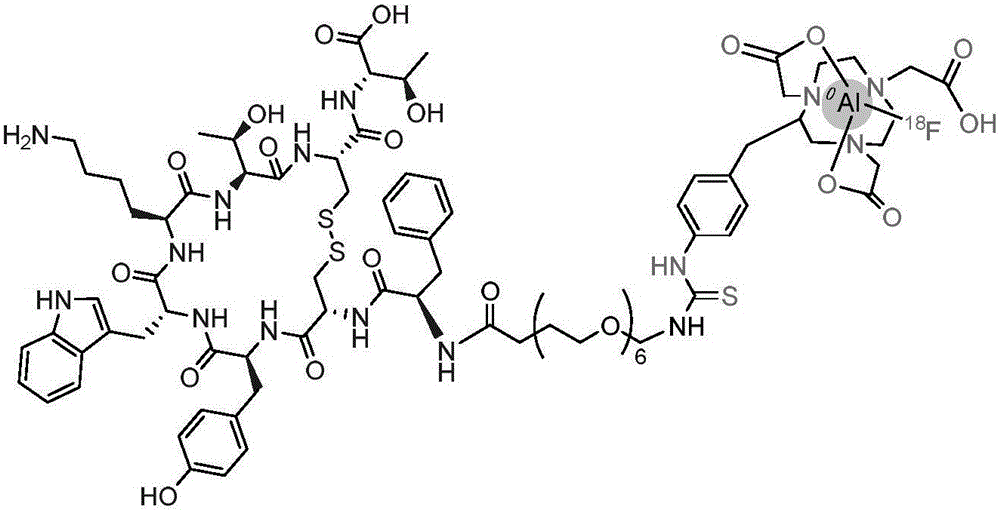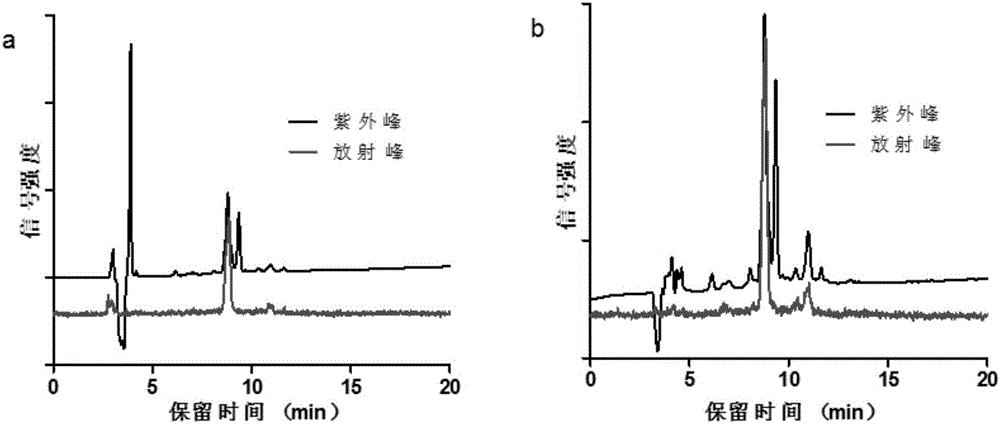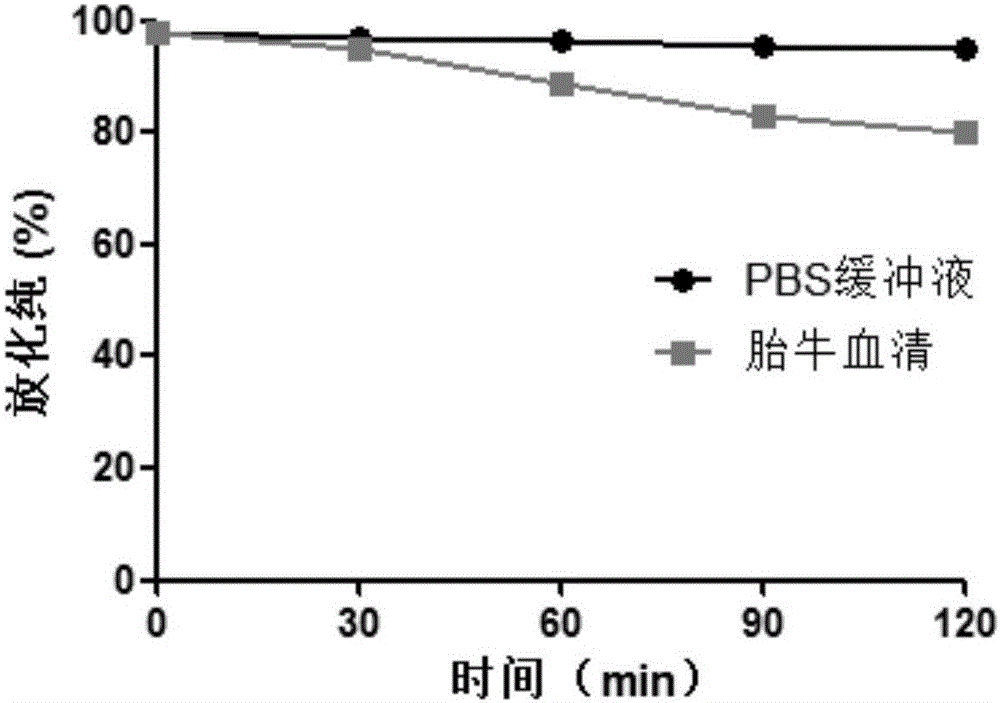Al18F-NOTA-PEG6-TATE of targeted somatostatin receptor and preparation method and application of Al18F-NOTA-PEG6-TATE
A technology of somatostatin receptor, al18f-nota-peg6-tate, applied in peptide preparation methods, chemical instruments and methods, radioactive carriers, etc., can solve the cumbersome preparation process, low yield, and difficult automation of the preparation process and other problems, to achieve the effect of simple labeling method and excellent yield
- Summary
- Abstract
- Description
- Claims
- Application Information
AI Technical Summary
Problems solved by technology
Method used
Image
Examples
Embodiment 1
[0043] Example 1 Radiolabeling
[0044] NOTA-PEG 6 -TATE by Al 18 F chemical method 18 F labeling is based on two completely different reaction systems, acetate buffer (pH=4) and acetonitrile, both of which are carried out in the same reaction vessel, and no intermediate products are produced during the reaction.
[0045] 1.1 Based on acetate buffer
[0046] Take 1ml from the accelerator in our center 18 F water solution, about 0.55–1.11GBq (15–30mCi), passed it through the activated QMA column, and then eluted with 0.2ml 0.9% normal saline 18 F ions into the 1.5ml EP tube, and then add 3μL 2mM AlCl to the EP tube in turn 3 (6nmol) acetate buffer (0.1M, pH=4) and 54.5nmol NOTA-PEG 6 - TATE precursor solution. After sealing, the reaction solution was reacted at 100°C for 20 minutes, cooled, and diluted with 0.5ml PBS buffer, then passed through the activated C18 column, and the column was first washed with 5ml deionized water to remove 18 F- and Al 18 f 2+ , and then ...
Embodiment 2
[0052] Embodiment 2 Fat-water partition coefficient is measured
[0053] Take 10μl (1.85MBq) of Al 18 F-NOTA-PEG 6-TATE reaction solution, added to a 1.5ml EP tube containing 0.5ml n-octanol and 0.5ml phosphate buffer (PBS), sealed, vortexed at room temperature for 2min, and centrifuged at 1000r / min for 5min. Sequentially take out 50 μl of the organic phase and the aqueous phase with a sample gun, place them in a gamma counter tube, and measure the count with a gamma counter. The average LogP value of the marker was calculated by the formula LogP=lg (count n-octanol / count PBS), and repeated three times.
[0054] Al was determined experimentally 18 F-NOTA-PEG 6 -TATE's Log P=-2.45±0.38, indicating that the molecular probe is obviously hydrophilic, so it can be speculated that the probe is excreted in the body through the urinary system.
Embodiment 3
[0055] Embodiment 3 in vitro stability test
[0056] Take 20μl (about 3.7MBq) of 18 F-NOTA-PEG 6 -TATE solution, respectively placed in 0.5mL of PBS buffer (pH=7.24, 0.02mol / L) or fetal bovine serum (FBS), incubated at 37°C, after 0.5, 1, 1.5 and 2h, HPLC Determine its radiochemical purity to observe its in vitro stability. However, for fetal bovine serum, first dilute it with an equal volume of acetonitrile, seal it, vortex it at room temperature for 2 minutes, centrifuge it at 1000 r / min for 5 minutes, and take the supernatant for analysis by HPLC.
[0057] al 18 F-NOTA-PEG 6 The in vitro stability test results of -TATE in PBS buffer solution and fetal bovine serum are as follows: image 3 shown, from image 3 It can be seen from the figure that the radiochemical purity of this molecular probe is still greater than 95% when incubated in PBS buffer at 37°C for 2 hours, and the radiochemical purity is greater than 80% when incubated in fetal bovine serum for 2 hours, ind...
PUM
 Login to View More
Login to View More Abstract
Description
Claims
Application Information
 Login to View More
Login to View More - R&D
- Intellectual Property
- Life Sciences
- Materials
- Tech Scout
- Unparalleled Data Quality
- Higher Quality Content
- 60% Fewer Hallucinations
Browse by: Latest US Patents, China's latest patents, Technical Efficacy Thesaurus, Application Domain, Technology Topic, Popular Technical Reports.
© 2025 PatSnap. All rights reserved.Legal|Privacy policy|Modern Slavery Act Transparency Statement|Sitemap|About US| Contact US: help@patsnap.com



